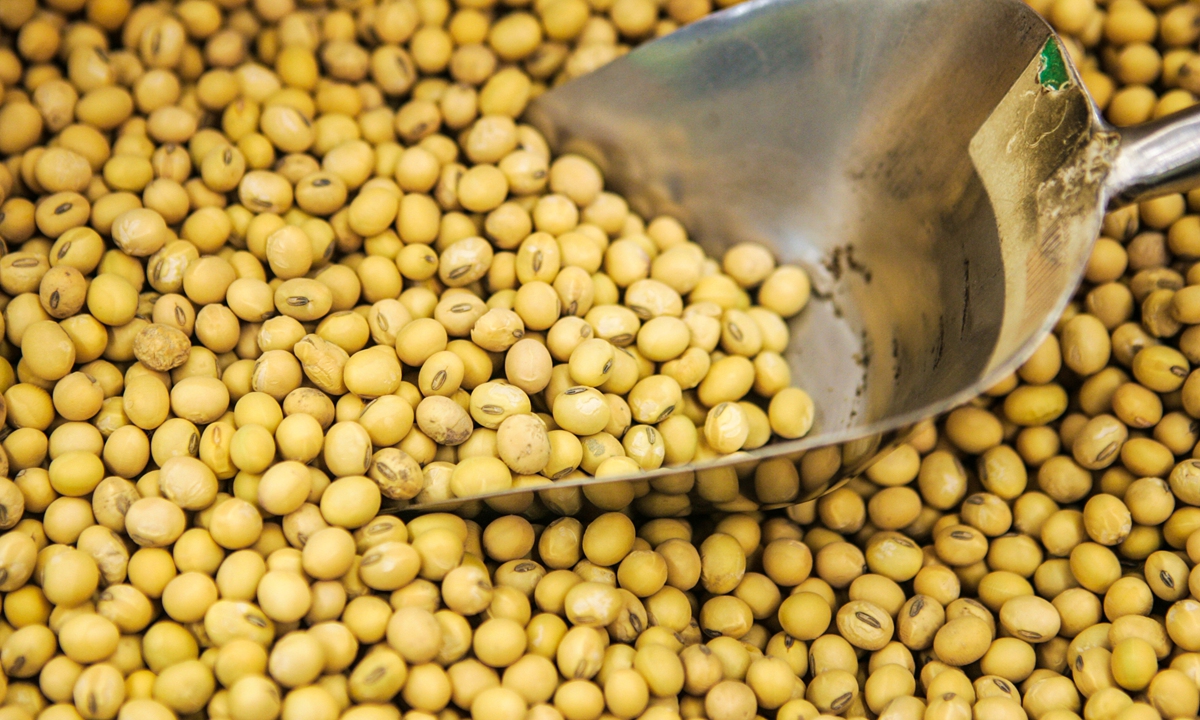
Soybean Photo: VCG
China rolls out a three-year action plan for the reduction and substitution of soybean meal in animal feed, per a recent notice issued by China's Ministry of Agriculture and Rural Affairs, as part of the latest efforts to ensure the stable and safe supply of food and important agricultural products.
The notice comes very timely in responding to the growing needs for tackling the imbalanced supply and demand of the domestic animal feed in which soybean takes the major share, experts said, predicting that imports, which take the dominant share in soybean supply, will be further cut and replaced by diversified supplies mainly from home production.
The soybean imports from the US, the major supplier, will be affected as the result of the structural change, experts said.
In the latest notice, a clear target was set highlighting that the country will strive to reduce the proportion of soybean meal in feed by more than 0.5 percentage points per year, and reduce the proportion of soybean meal in feed from 14.5 percent in 2022 to less than 13 percent by 2025.
Such aim will be conducted under the premise of ensuring stable production efficiency of livestock and poultry.
Dai Xiaofeng, former director with the Institute of Feed Research of Chinese Academy of Agricultural Sciences, told the Global Times on Friday that the notice came very timely as part of the series of government's efforts in tackling the food security issue, partially posed on the rising demand for meat products.
With the continuous growth of people's living standards, the demand for high-protein food is rising significantly, which has led to a structural imbalance in the supply and demand of feed raw materials such as soybean, Dai said.
In order to reach the target, a series of measures will take place nationwide, according to the notice. That include improving the efficiency, increasing revenue, and adjusting supply chain structure in using protein feed resources such as plants, animals, and microorganisms.
New products, new technology and application will be strengthened to reduce the proportion of soybean meal in the feed as part of the efforts in ensuring the food safety and stable supply of major agricultural products, the notice said. The domestic production of other animal feeds will also be promoted.
As the world's largest pork production and consumption country, China heavily relies on soybean supply, the major source for animal feed, of which more than 88 percent is imported.
The US is the second largest source of supply, taking 32.42 percent, after Brazil.
China's soybean import is relatively concentrated in certain countries and production areas, which constitute a potential risk for food safety, Dai said.
In responding to the situation, in the past 2021 and 2022, the government has been advocating the reduction of soybean imports, and the effect is conspicuous.
In 2022, China's soybean imports amounted to 91.08 million tons, a drop of 5.44 million tons year-on-year, which was the second year in a row that soybean imports fell.
With the release of the new notice, such momentum will continue this year, Dai said.
While imports will be reduced, it is important to note that the move is not targeting any particular country, the expert said, noting that it is only a part of a series of works to diversify the sources of supplies and expand home production so as to make sure that the rice bowls of China's 1.4 billion people will always be firmly held in their own hands.




